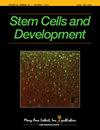Limited efficacy of adipose stromal cell secretome-loaded skin-derived hydrogels to augment skin flap regeneration in rats.
IF 2.5
3区 医学
Q3 CELL & TISSUE ENGINEERING
引用次数: 4
Abstract
Insufficient vascularization is a recurring cause of impaired pedicled skin flap healing. The administration of adipose tissue-derived stromal cells' (ASC) secretome is a novel approach to augment vascularization. Yet, the secretome comprised soluble factors that require a sustained release vehicle to increase residence time. We hypothesized that administration of a hydrogel derived from decellularized extracellular matrix (ECM) of porcine skin with bound trophic factors from ASCs, enhances skin flap viability and wound repair in a rat model. Porcine skin was decellularized and pepsin-digested to form a hydrogel at 37°C. Conditioned medium (CMe) of human ASC was collected, concentrated twentyfold and mixed with the hydrogel. Sixty Wistar rats were included. A dorsal skin flap (caudal based) of 3 x 10 cm was elevated for topical application of: DMEM medium (group I), a pre-hydrogel with or without ASC CMe (group II and III) or ASC CMe (group IV). After 7, 14 and 28 days, perfusion was measured and skin flaps were harvested for wound healing assessment and immunohistochemical analysis. Decellularized skin ECM hydrogel contained negligible amounts of DNA (11.6 ± 0.6 ng/mg), was noncytotoxic and well-tolerated by rats. Irrespective of ASC secretome, ECM hydrogel application resulted macroscopically and microscopically in similar dermal wound healing in terms of proliferation, immune response and matrix remodeling as the control group. However, ASC CMe alone increased vessel density after seven days. Concluding, porcine skin derived ECM hydrogels loaded with ASC secretome are non-cytotoxic but demand optimization to significantly augment wound healing of skin flaps.装载脂肪基质细胞分泌体的皮肤源性水凝胶增强大鼠皮瓣再生的有限功效。
血管化不足是带蒂皮瓣愈合受损的复发原因。脂肪组织来源的基质细胞(ASC)分泌组的给药是一种增强血管形成的新方法。然而,分泌组包含可溶性因子,需要持续释放载体来增加停留时间。我们假设,在大鼠模型中,施用源自猪皮肤脱细胞细胞外基质(ECM)的水凝胶和来自ASCs的结合营养因子,可以增强皮瓣的活力和伤口修复。猪皮肤脱细胞,胃蛋白酶在37°C下消化形成水凝胶。收集人ASC的条件培养基(CMe),浓缩20倍并与水凝胶混合。包括60只Wistar大鼠。抬高3 x 10cm的背侧皮瓣(基于尾部),用于局部应用:DMEM培养基(第I组)、含有或不含有ASC CMe的预水凝胶(第II和III组)或ASC CMe(第IV组)。在7、14和28天后,测量灌注并收获皮瓣用于伤口愈合评估和免疫组织化学分析。脱细胞皮肤ECM水凝胶含有可忽略不计的DNA(11.6±0.6 ng/mg),无细胞毒性,大鼠耐受性良好。无论ASC分泌组如何,ECM水凝胶的应用在宏观和微观上导致了与对照组在增殖、免疫反应和基质重塑方面相似的真皮伤口愈合。然而,单独的ASC CMe在7天后增加了血管密度。最后,负载ASC分泌组的猪皮肤来源的ECM水凝胶是非细胞毒性的,但需要优化以显著增强皮瓣的伤口愈合。
本文章由计算机程序翻译,如有差异,请以英文原文为准。
求助全文
约1分钟内获得全文
求助全文
来源期刊

Stem cells and development
医学-细胞与组织工程
CiteScore
7.80
自引率
2.50%
发文量
69
审稿时长
3 months
期刊介绍:
Stem Cells and Development is globally recognized as the trusted source for critical, even controversial coverage of emerging hypotheses and novel findings. With a focus on stem cells of all tissue types and their potential therapeutic applications, the Journal provides clinical, basic, and translational scientists with cutting-edge research and findings.
Stem Cells and Development coverage includes:
Embryogenesis and adult counterparts of this process
Physical processes linking stem cells, primary cell function, and structural development
Hypotheses exploring the relationship between genotype and phenotype
Development of vasculature, CNS, and other germ layer development and defects
Pluripotentiality of embryonic and somatic stem cells
The role of genetic and epigenetic factors in development
 求助内容:
求助内容: 应助结果提醒方式:
应助结果提醒方式:


